DART Bus Accident Claim FAQs (2024)
December 22, 2023
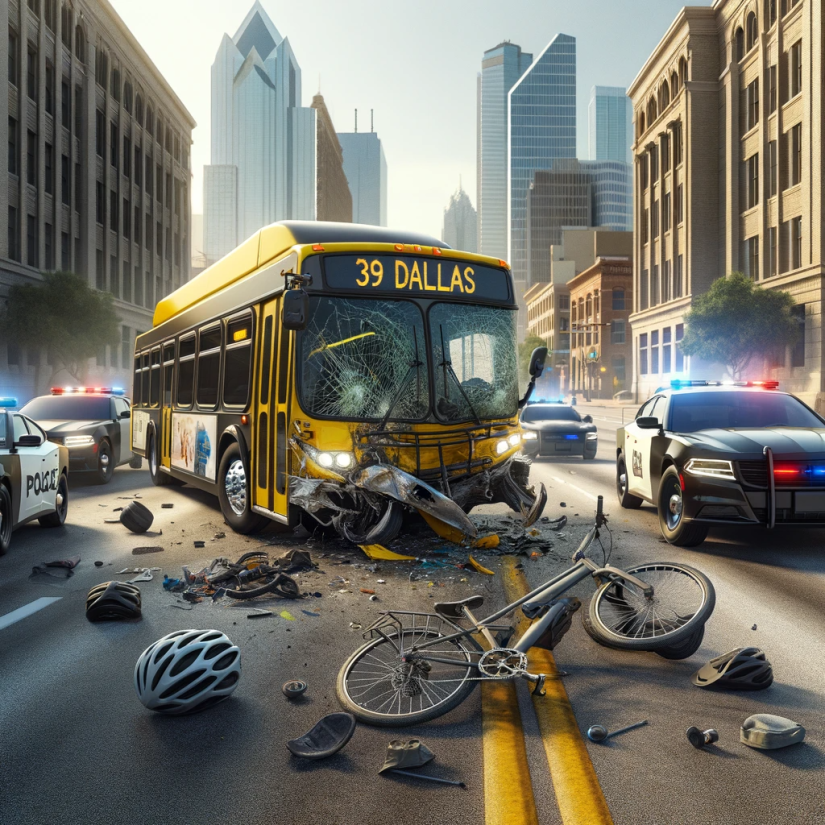
- Key Takeaways
- About DART
- What is DART?
- What is DART’s history?
- Where does DART have bus routes?
- How big is DART’s fleet of buses?
- DART Bus Accident Examples, Settlements, & Verdicts
- DART Bus Accidents in the News
- Examples of DART Bus Accident Settlements
- Examples of DART Bus Accident Jury Verdicts
- DART Bus Safety Rules
- What safety standards are DART buses required to follow?
- What training do DART bus drivers undergo for safe operation?
- How are DART buses inspected and maintained in a safe condition?
- Steps to Take After a DART Bus Accident
- Should I call 911?
- Should I go to the ER?
- Should I talk to the police or fire department at the scene of the wreck?
- Should I take photographs at the scene of the wreck?
- Should I give a recorded statement?
- Should I exchange contact information with other passengers and eyewitnesses?
- Should I get the bus driver’s contact information?
- Should I tell my own auto insurance provider?
- Should I hire an attorney to handle my DART bus accident injury claim?
- Causes of DART Bus Accidents
- What are common causes of personal injuries involving DART buses?
- Are DART bus accidents more likely in certain weather conditions?
- Evidence in DART Bus Accident Cases
- What type of evidence is important in a DART bus accident claim?
- What type of video footage do the cameras on DART buses capture?
- How can I obtain surveillance footage from a DART bus?
- What is the role of witness statements in bus accident claims?
- Filing a DART Bus Accident Claim
- Are there special notice requirements that apply to DART?
- Is DART immune from personal injury claims arising out of a bus accident?
- Can I bring claims against both DART and the bus driver for injuries in a bus accident?
- Damages Available to DART Bus Accident Victims
- What types of damages can I claim as a passenger injured in a DART bus accident?
- Is there a cap on damages that I can recover from my DART bus accident claim?
- Statute of Limitations for DART Bus Accident Claims
- What is the statute of limitations for filing a DART bus accident claim in Texas?
- What are the consequences of failing to file my lawsuit before the statute of limitations expires?
- Legal Representation for Individuals Injured in DART Bus Accidents
In this article, you’ll learn everything you need to know about DART bus accident claims in Texas.
Key Takeaways
- Claimants must give written notice to DART within 6 months of the incident.
- The statute of limitations for DART bus accident personal injury claims is 2 years.
- Damages caps of $100,000 per person and $300,000 per incident apply to DART bus accident claims.
- DART bus drivers are held to a heightened standard of care compared to regular drivers.
- A claimant who brings a claim against DART cannot also bring a claim against the bus driver.
- Video footage of the accident captured by DART’s SmartDrive cameras can play a key role in determining fault.
About DART
What is DART?
Dallas Area Rapid Transit, or DART, is a key transit service in Texas. Created in 1983, it serves 13 cities like Dallas and Plano. It’s known for its large network and role in urban travel in the Dallas Fort Worth Metro Area.
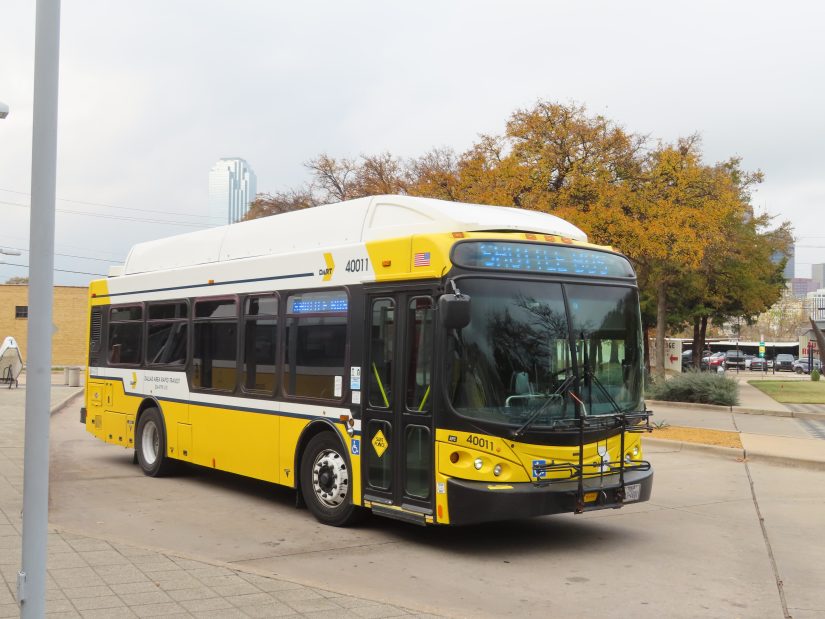
What is DART’s history?
DART has grown since 1983, shaping public transit in Dallas. It reflects the changing needs of the area it serves.
Where does DART have bus routes?
DART’s routes are based on a hub-and-spoke design. It includes various transfer centers with amenities. DART’s service area includes the Cities of:
- Addison,
- Carrollton,
- Cockrell Hill,
- Dallas,
- Farmers Branch,
- Garland,
- Glenn Heights,
- Highland Park,
- Irving,
- Plano,
- Richardson,
- Rowlett, and
- University Park.
Here is a list of DART’s facilities around the Dallas-Fort Worth Metropolitan area:
- Addison Transit Center (Addison)
- Bernal/Singleton Transfer Location (West Dallas)
- Cockrell Hill Transfer Location (Cockrell Hill)
- East Transfer Center (Downtown Dallas, near Pearl/Arts District)
- Glenn Heights Park and Ride (Glenn Heights)
- Jack Hatchell Transit Center (Plano)
- J. B. Jackson Transit Center (Fair Park)
- Lake Ray Hubbard Transit Center (Garland)
- Malcolm X Boulevard Transfer Location (South Dallas)
- North Irving Transit Center (Irving)
- Northwest Plano Park and Ride (Plano)
- Red Bird Transit Center (South Dallas)
- South Garland Transit Center (Garland)
- West Transfer Center (Downtown Dallas, near West End)
Here is a map of the DART bus routes in Dallas:
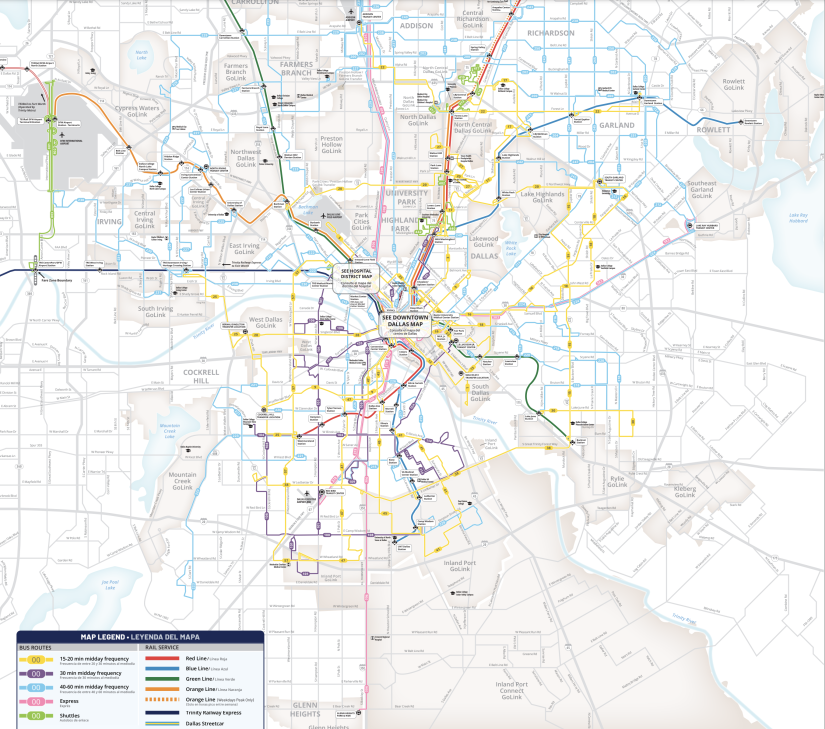
How big is DART’s fleet of buses?
According to DART’s website, it has:
- 692 buses in its fleet,
- 6,878 bus stops, and had
- 20.1 million riders in 2021.
DART Bus Accident Examples, Settlements, & Verdicts
DART Bus Accidents in the News
In a startling recent incident involving DART, a bus crashed into Copart Tower on Spring Valley Road.
This accident occurred before 8:30 a.m. near the Dallas North Tollway intersection. The bus, carrying passengers, collided with the building’s north side.
The aftermath included two individuals being stretchered away by first responders. The exact number of passengers and the full extent of injuries were unclear at the time.
Examples of DART Bus Accident Settlements
- Kendra Hoskins v. Dallas Area Rapid Transit
- Incident: Kendra Hoskins was a passenger in a car that collided with a DART bus.
- Allegations: Hoskins claimed severe injuries from the collision.
- Legal Action: Filed a negligence claim against DART and the car driver.
- Defense: DART denied the allegations, citing various defenses.
- Settlement: The case was settled for an undisclosed amount and dismissed with prejudice.
- Lakesha Williams v. Dallas Area Rapid Transit
- Incident: Williams was injured as a passenger in a collision between two DART buses.
- Allegations: She suffered physical and mental injuries and claimed negligence.
- Defense: DART raised defenses including governmental immunity.
- Settlement: The case was resolved through confidential mediation and dismissed with prejudice.
For more detailed information on these cases, please refer to their respective legal documents.
Examples of DART Bus Accident Jury Verdicts
- Eugene Gaytan vs. Dallas Area Rapid Transit
- Collision: Between a DART bus and an automobile.
- Injury Type: Soft tissue injuries to neck and back.
- Verdict: Jury found equal negligence between the DART bus driver and the other driver.
- Damages Awarded: No compensation for pain or impairment; $7,000 for past medical expenses and $45,000 for future medical costs.
- Final Judgment: After adjustments, the judgment in favor of DART was $52,000.
- Jessica Hayden v. DART
- Collision: Hayden was injured as a passenger in a bus accident.
- Verdict: DART found negligent; Hayden awarded $45,318.85 for past damages.
- Additional Compensation: Prejudgment interest of $7,002.68 and court costs of $2,823.41 were added to the award.
For more detailed information on these cases, please refer to their respective legal documents.
DART Bus Safety Rules
What safety standards are DART buses required to follow?
DART buses, recognized as common carriers, must uphold a high degree of care in operations. This means they are expected to foresee and guard against potential dangers, exercising a high degree of caution and prudence.
DART bus drivers are held to a higher standard of care than drivers of passenger vehicles because get are responsible for the safety of many people.
When a DART driver does not exercise a heightened degree of care while driving their bus, they can cause severe harm to passengers, pedestrians, and other drivers on the road in the event of a collision.
The heightened standard of care is crucial due to the size and weight of the buses, heavy volume of passengers, the lack of passenger seat belts on some buses, the need to frequently stop and go, the heavy traffic in the urban environments in which they typically operate, and other unique challenges of public mass transit.
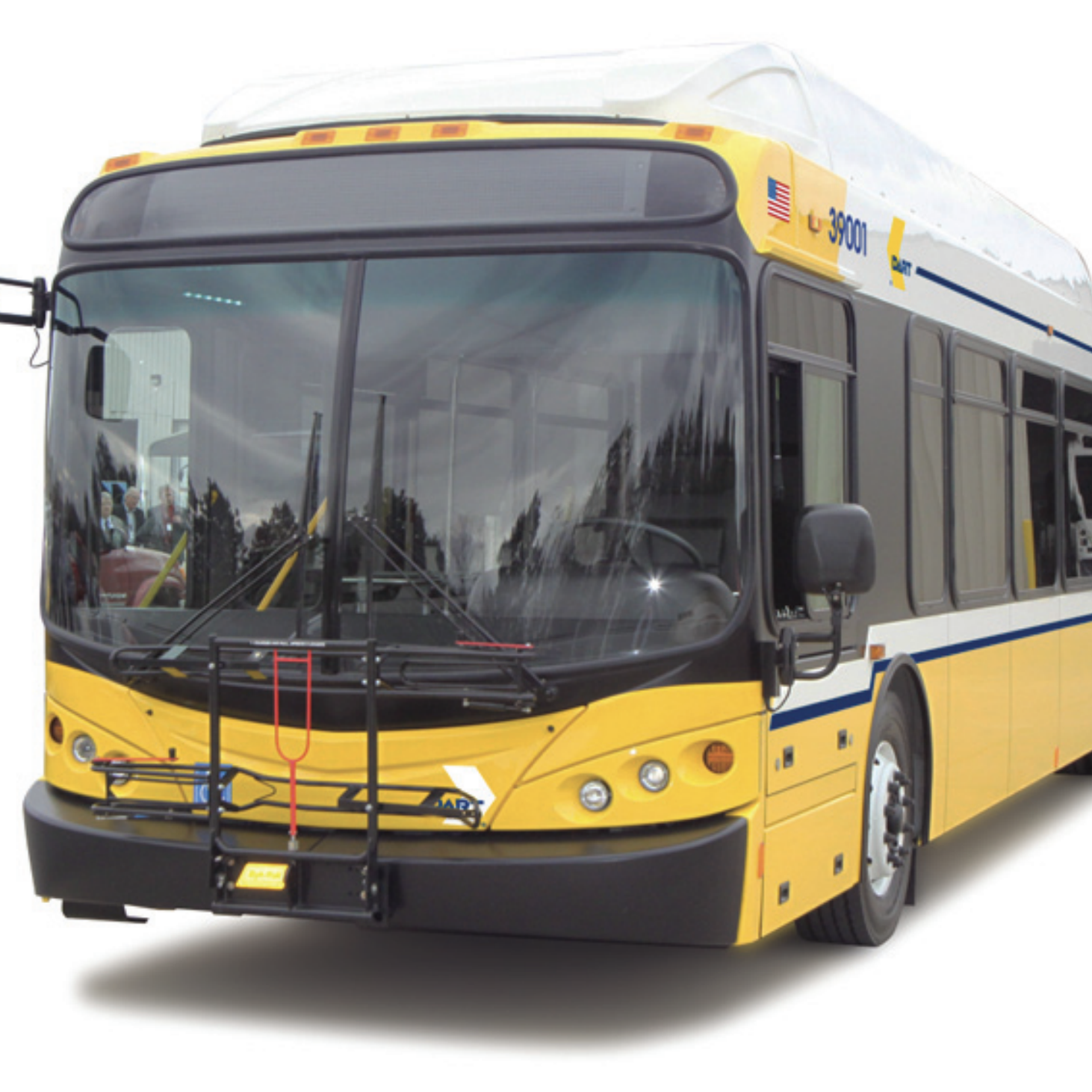
For an in-depth understanding of the standard of care that DART bus drivers must follow, see DART v. Morris and Speed Boat Leasing, Inc. v. Elmer.
What training do DART bus drivers undergo for safe operation?
According to a DART job posting, bus drivers must:
- have a high school or general education diploma (GED);
- have at least 5 years experience in the operation of a motor vehicle;
- have at least 1 year experience in a customer service environment;
- have a valid Texas Commercial Drivers License (CDL) Class A or B to include a passenger endorsement;
- not have a Driving While Intoxicated (DWI) conviction within the last 60 consecutive months;
- not have more than one DWI on their driving record;
- not have more than 3 convictions of moving violations on their driving record within the last 36 months;
- pass a Department of Transportation (DOT) medical examination prior to hire and periodically as a condition of continued employment;
- pass a DOT pre-employment drug test and random alcohol and drug testing as a condition of continued employment; and
- pass a technical knowledge test.
How are DART buses inspected and maintained in a safe condition?
Although I could not find information on DART’s website about its specific inspection and maintenance practices, common carriers must ensure their buses are in safe, working order.
A Texas Transportation Institute report recommends the following:
- Pre-trip inspection: This typically consists of a checklist for the driver to complete before driving their bus. It should identify safety concerns related to the mechanical condition of the bus that need to be corrected before operating the bus.
- Post-Trip Inspection: A post-trip inspection should be completed at the end of an operator’s schedule to identify any problems that may have developed during the day.
- Preventative Maintenance:
- Daily servicing of fuel and fluid levels, safety devices to ensure they are in working order, inspection and cleaning of the interior and exterior of buses to ensure they are not damaged.
- Periodic checks to detect and repair damage or wear conditions before major problems occur. Examples include checking for tire wear, suspension issues, and wear-and-tear of belts.
- Interval-related maintenance based on the bus manufacturer guidelines, such as replacing lubricating oils, brake fluids, tires, and parts.
- Record-Keeping: Records should be kept of all maintenance and repair activities. All maintenance and repair activities should be recorded.
- Manufacturer’s Warranty: Maintenance follows the Manufacturer’s Warranty Maintenance Schedule, especially important for DART’s fleet of compressed natural gas-powered buses manufactured by North American Bus Industries (NABI).
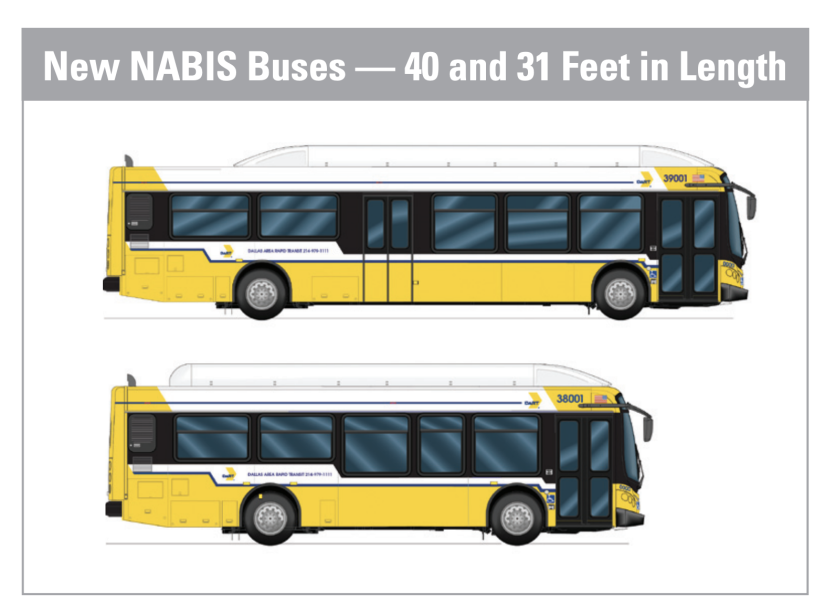
In case of a DART bus accident, a key aspect for a personal injury lawyer is investigating whether inadequate maintenance contributed to the incident. Proper inspection and maintenance are crucial to prevent accidents and ensure passenger safety.
Steps to Take After a DART Bus Accident
Should I call 911?
If you’re involved in a DART bus wreck, call 911 immediately, especially if there are injuries.
Should I go to the ER?
Yes. If you’re injured or feeling any kind of pain, it’s crucial to go to the emergency room for a medical evaluation.
Individuals who have been injured in a wreck often don’t feel any pain for days or even weeks after the collision. As soon as you notice symptoms, seek medical attention.
Should I talk to the police or fire department at the scene of the wreck?
Yes. Speak with police officer at the scene for official documentation. Ask them for their accident report number so that you can get a copy of their report later.
If the investigating officer doesn’t have a crash report number to give you, write down their name, badge number, and the police department for which they work.
Should I take photographs at the scene of the wreck?
Yes. Photograph the accident scene, including vehicle damages, property damage, skid marks, your injuries, the surrounding area, and anything else that may be relevant.
Should I give a recorded statement?
No. You’re not obligated to give a recorded statement, and it’s usually not in your best interest to give one without legal advice from a personal injury attorney.
Should I exchange contact information with other passengers and eyewitnesses?
Yes. Get contact details of other passengers and eyewitnesses.
Should I get the bus driver’s contact information?
Yes. Obtain the bus driver’s contact and identification information.
Should I tell my own auto insurance provider?
Yes. Inform your auto insurance provider about the accident.
Should I hire an attorney to handle my DART bus accident injury claim?
Yes. Consult a personal injury attorney with experience representing clients hurt in motor-vehicle collisions to handle your claim.
Causes of DART Bus Accidents
What are common causes of personal injuries involving DART buses?
The following are common causes for personal injuries involving buses, including DART buses:
- Bus Driver Negligence in Wrecks: This includes accidents caused by fatigue, lack of attention, speeding, running red lights, tailgating, impairment due to drugs or alcohol, distracted driving, disobeying traffic signals, and not signaling properly. These actions can lead to collisions with pedestrians or other vehicles.
- Startling Statistics: A Dallas Morning News article reports that, in May of 2014, DART supervisors started writing up drivers who were caught on the driver-facing cameras engaged in dangerous driving habits. Such behavior included talking on cellphones, speeding, and running red lights. The article reports that DART supervisors coached drivers on dangerous driving behavior caught on camera an average of 678 times per month.
- Bus Driver Negligence Without a Wreck: Situations where the driver starts moving before passengers are seated or while they are getting on to or off of the bus.
- Maintenance Failures: A bus carrier’s failure to keep its fleet of buses in safe, working order can lead to crashes. Common issues include brake problems or other mechanical failures that decrease vehicle safety.
Understanding these causes is crucial for passengers to recognize potential risks and for pursuing legal claims in case of an injury.
Are DART bus accidents more likely in certain weather conditions?
Yes. Bad weather, such as heavy rain, fog, or icy roads, can increase the risk of a DART bus accident because of reduced visibility or slippery roads. Bus drivers must use extra caution when driving in these conditions. It’s important for passengers to be aware of these risks, especially during severe weather events in Texas.
Evidence in DART Bus Accident Cases
What type of evidence is important in a DART bus accident claim?
Crucial evidence in a DART bus accident claim includes:
- Dash Camera Footage: It can provide real-time evidence of how an accident unfolded and who caused it. DART buses have a driver-facing video camera and a front-facing video camera.
- Security Camera Footage: Provides video footage of passengers when the bus accident occurred.
- Crash Report: The official documentation of the accident.
- DART Bus Driver Policies and Procedures: Documentation of the policies and procedures that DART bus drivers must follow.
- Eyewitness Testimony: Statements and recorded accounts from those who witnessed the incident.
- 911 Call Transcript: Records of emergency calls made from the scene.
- Electronic Logging Devices: Information from devices that record vehicle activity.
- Hours of Service Records: Logs that track the driver’s working hours.
- Route Logs: Details of the bus route at the time of the accident.
- Driver’s Duty Records: Documentation of the driver’s work activities.
- Driver Personnel File: This will include any write-ups, disciplinary actions, or “coaching” that DART supervisors may have provided to a DART bus driver for potential dangerous driving habits.
- Maintenance and Repair Records: History of the bus’s upkeep.
- Driver Qualification File: Official records of the driver’s qualifications.
- Driver’s Driving History: Record of the driver’s past driving performance.
- Driver’s Employment History: Details of the driver’s work background.
- Drug and Alcohol Test Results: Results of tests conducted post-accident.
- Officer’s Dashboard and Body Camera Footage: Video evidence from the responding officer.
- Driver’s Mobile Device Records: Details of the driver’s phone usage during the incident.
Gathering this evidence is crucial for building a strong case in a DART bus accident claim.
What type of video footage do the cameras on DART buses capture?
According to the Dallas Morning News, DART buses use two types of cameras: passenger security cameras and SmartDrive cameras.
Passenger Security Cameras:
- These cameras focus on passenger areas of the bus. DART primarily uses them to capture criminal activities on the bus.
- Passengers who are injured in a bus accident may use footage of themselves at the time of impact. The footage may show the whiplash or other trauma they sustained at the time of the wreck.
- DART keeps the footage captured on the security cameras for 14 days.
SmartDrive Cameras:
- The SmartDrive system consists of two cameras: one facing the driver and another facing the front exterior of the bus.
- DART primarily uses the footage to determine fault in bus accidents and identify risky driving habits.
- These cameras continuously record footage, but they are not constantly monitored.
- Instead, they automatically tag footage for human review when sensors detect significant changes in G-forces, like sudden stops or quick jerks. These triggers indicate potential incidents or risky driving habits. The tagged footage is then evaluated by a third-party and sent to supervisors if any driving infractions are identified.
How can I obtain surveillance footage from a DART bus?
Submit a timely, written open records request to DART. A bus accident lawyer can help you with this. DART’s website has instructions for submitting an information request after a bus accident. DART only keeps certain video footage captured by bus security cameras for 14 days, so don’t delay in submitting your request.
What is the role of witness statements in bus accident claims?
Witness statements play a vital role in bus accident claims. They provide independent accounts of the incident, which can corroborate or contradict the versions given by the driver and passengers.
These statements are particularly valuable when there are conflicting reports about how the accident occurred.
Witnesses can offer insights into the behavior of the bus driver, the condition of the road, traffic signals, and other relevant details that may not be captured by cameras or other evidence. Their testimonies can significantly impact the determination of fault and liability in a bus accident case.
Filing a DART Bus Accident Claim
Are there special notice requirements that apply to DART?
Yes. Special notice requirements apply to DART because it is a governmental entity. Let’s look at the notice requirements.
Written Notice Requirements
Under Section 101.101(a) of the Texas Civil Practice and Remedies Code, before you can assert a claim in a lawsuit against DART, you must provide written notice of your claim arising from a bus accident to DART no later than 6 months after the date of the incident giving rise to your claim.
Your written notice must describe in reasonable detail:
- the incident;
- the date, time, and place of the incident; and
- the damage or injury claimed.
The purpose of the notice requirement is to ensure prompt reporting of claims to enable governmental units to gather information necessary to guard against unfounded claims, settle claims, and prepare for trial. Cathey v. Booth, 900 S.W.2d 339, 341 (Tex. 1995) (per curiam).
Actual Notice Exception
Section 101.101(c) provides an exception to the notice requirements where a governmental entity has “actual notice” of that:
- death has occurred,
- the claimant has received some injury, or that
- the claimant’s property has been damaged.
Example of Actual Notice
For example, in DART v. Armstrong, a DART bus driver allegedly failed to pay attention while making a right turn. The bus struck the plaintiff, who was severely injured.
DART asked the court dismiss the plaintiff’s lawsuit because he failed to serve it with written notice within 6 months of the accident. The court rejected this argument.
Instead, the court found that DART had actual notice under Section 101.101(c) of the Texas Civil Practice and Remedies Code because the sole reason the plaintiff was injured was because a DART bus struck him while he was crossing the street. “Under these facts,” the court explained, “we cannot conclude DART was unaware of its fault producing or contributing to his injury.” Dall. Area Rapid Transit v. Armstrong, No. 05-14-00779-CV (Tex. App.—Dallas Apr. 16, 2015, pet. denied).
With that said, if you were injured in a DART bus wreck, err on the side of caution and make sure to serve written notice that complies with the requirements above. Make sure to keep proof of the date of delivery of your notice
Is DART immune from personal injury claims arising out of a bus accident?
No. Although Texas law generally protects governmental entities like DART from lawsuits for money damages, the Texas Tort Claims Act (TTCA) waives this immunity as to injuries or death arising from the operation or use of a motor-driven vehicle. Fort Worth Transp. Auth. v. Rodriguez, 547 S.W.3d 830, 839 (Tex. 2018).
Specifically, a governmental unit in the state is liable for:
(1) property damage, personal injury, and death proximately caused by the wrongful act or omission or the negligence of an employee acting within his scope of employment if: (A) the property damage, personal injury, or death arises from the operation or use of a motor-driven vehicle or motor-driven equipment; and (B) the employee would be personally liable to the claimant according to Texas law; and
(2) personal injury and death so caused by a condition or use of tangible personal or real property if the governmental unit would, were it a private person, be liable to the claimant according to Texas law.
Texas Civil Practice and Remedies Code Section 101.021.
The TTCA does, however, cap the amount of money damages that a person may recover from a personal injury claim arising from the operation or use of a DART bus. Continue reading to learn more about the damages caps that apply to DART bus accident personal injury claims.
Can I bring claims against both DART and the bus driver for injuries in a bus accident?
No. Governmental employees, including DART bus drivers, are exempt from personal liability under the Texas Tort Claims Act if you file a lawsuit against DART. The election of remedies provision states, “The filing of a suit under this chapter against a governmental unit constitutes an irrevocable election by the plaintiff and immediately and forever bars any suit or recovery by the plaintiff against any individual employee of the governmental unit regarding the same subject matter.” Texas Civil Practice and Remedies Code Section § 101.106(a).
As the Texas Supreme Court explained,
This provision was incorporated into the TTCA to prevent plaintiffs from circumventing the TTCA’s damages cap by suing government employees, who were, at that time, not protected. Garcia, 253 S.W.3d at 656. It was expanded in 2003, as part of a comprehensive effort to reform the tort system, with the apparent purpose of forcing a plaintiff “to decide at the outset whether an employee acted independently and is thus solely liable, or acted within the general scope of his or her employment, such that the governmental unit is vicariously liable.” Id. at 657.
Fort Worth Transp. Auth. v. Rodriguez, 547 S.W.3d 830, 839 (Tex. 2018).
Damages Available to DART Bus Accident Victims
What types of damages can I claim as a passenger injured in a DART bus accident?
In general, an individual may recover the following types of past and future damages resulting from a personal injury sustained in a DART bus accident:
- medical expenses,
- physical pain and suffering,
- mental anguish,
- physical disfigurement,
- lost wages,
- loss of earning capacity, and
- loss of enjoyment of life.
Is there a cap on damages that I can recover from my DART bus accident claim?
Yes. In Texas, Section 101.023(b) of the Texas Civil Practice and Remedies Code limits the amount of money damages that a person can recover from “a unit of local government” to $100,000 for each person and $300,000 for each single occurrence for bodily injury or death.
DART likely qualifies as “a unit of local government” rather than a municipality (with higher damages caps under Section 101.023(a)). In Fort Worth Transportation Authority v. Rodriguez, the Texas Supreme Court treated the Fort Worth Transportation Authority as a unit of local government to which the $100,000 damages cap applied. 547 S.W.3d 830, 854 (Tex. 2018).
That said, a plaintiff may argue for the application of the higher damages caps under Section 101.023)(a) by pleading and proving that DART more closely resembles a state government or a municipality rather than a “unit of local government.”
As the Texas Supreme Court explained,
Under Section 101.023, a governmental unit’s liability for personal-injury claims is limited to either $100,000 per person (if the defendant is a unit of local government or an emergency service organization) or $250,000 per person (if the defendant is the state government or a municipality). Tex. Civ. Prac. & Rem. Code § 101.023. The court of appeals concluded that the higher ($250,000) cap applied. 644 S.W.3d at 377. But Curry did not plead that his claim was subject to the higher damages cap under Section 101.023. Nor does the record contain evidence that would support a determination that the higher cap applies. In other words, there is no evidence that Gulf Coast was “the state government” under Section 101.023(a) or “a municipality” under Section 101.023(c). Curry therefore failed to affirmatively demonstrate that Gulf Coast’s immunity from suit was waived beyond the $100,000 cap.
Gulf Coast Ctr. v. Curry, 658 S.W.3d 281, 288 (Tex. 2022).
Statute of Limitations for DART Bus Accident Claims
What is the statute of limitations for filing a DART bus accident claim in Texas?
In Texas, the statute of limitations for filing a DART bus accident claim is two years from the date of the accident. This time frame applies to tort claims, including those involving negligence causing personal injury. Importantly, Section 101.101(a) of the Texas Civil Practice and Remedies Code requires that DART be given written notice of the claim within six months of the incident. This notice requirement is crucial for the validity of the claim.
What are the consequences of failing to file my lawsuit before the statute of limitations expires?
If the statute of limitations expiration date for a DART bus accident claim in Texas is missed, it generally results in the claim being barred. This means the court is likely to dismiss any lawsuit filed after this period, effectively preventing the injured party from obtaining compensation through the legal system for their injuries or damages. It’s crucial to file your lawsuit within this timeframe to maintain the right to seek legal recourse.
Legal Representation for Individuals Injured in DART Bus Accidents
Why is it important to have a lawyer for a DART bus accident claim?
Having a lawyer for a DART bus accident claim is important due to the complexities involved in such cases. An attorney can:
- help you navigate the legal intricacies specific to public transportation accidents,
- deal effectively with large entities like DART and insurance companies,
- gather evidence,
- ensure adherence to specific procedures and deadlines,
- help you accurately assess your damages, and
- negotiate a fair settlement.
What should I look for when choosing an attorney for my bus accident case?
When choosing an attorney for a bus accident case, prioritize finding one with litigation experience and a background in handling personal injury claims arising from motor-vehicle collisions. It’s also beneficial to select an attorney with experience in dealing with cases involving governmental entities, as they will have specific knowledge relevant to handling claims against entities like DART. These qualifications are key to effectively navigating the complexities of bus accident litigation.
How does a lawyer help in negotiating settlements in bus accident cases?
In bus accident cases, a lawyer helps negotiate settlements by assessing the full extent of your damages and injuries to determine a fair compensation amount. They gather necessary evidence to strengthen your claim and handle communications with insurance companies and other parties involved. Their expertise in legal strategies and understanding of the specific nuances of public transportation accidents aids in advocating effectively on your behalf, ensuring that you receive a settlement that adequately covers your losses and expenses.